By Sukant Deepak
Historian, author and photographer William Dalrymple believes that it is imperative that political forces do not interfere with either literature, the arts or writing of history — and that 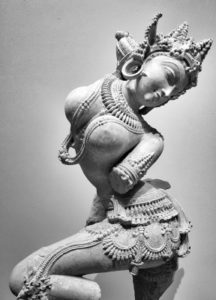 goes for any government in power — right, left or centrist.
goes for any government in power — right, left or centrist.
While he does not see anything wrong with re-writing of history as every generation does that and it happens to be an ongoing process, the author of books like ‘The Anarchy’, ‘The Last Mughal’, ‘The White Mughals’ and ‘Return of a King’ among others, feels that when it done with particular end in mind rather than by impartial looking at the evidence, the same can be very damaging.
“You have to make a fair judgment based on available evidence, and then write as impartially as you can. Frankly, no one is completely impartial, we all come to any given situation with the biases and ideas we were brought up with. And so the writing of history will never be ‘complete’,” he tells IANS.
Talk to him about the dominance of Marxist left in many history departments in the post war period, and he feels that it is inevitable that there be a reaction against that.
“There is a historiography emphasising economical and social forces at the expense of biography and human agency. Yes, very few biographies have been written by Indian history departments until recently. I support some form of re-balancing, particularly towards more biographically led history and that is what I have been doing in my work already. It makes 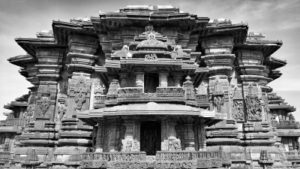 history much more interesting and accessible. Many Marxist historians researching early India, often ignored the importance of religion as a motivating force in human history,” he says.
history much more interesting and accessible. Many Marxist historians researching early India, often ignored the importance of religion as a motivating force in human history,” he says.
Dalrymple, whose latest series of photographs ‘In Search of Ancient India’ is being exhibited (October 8-November 3) at Vadehra Art Gallery in the capital says it is a byproduct of his new book project – ‘The Golden Road’. “As you know, for the past 20 years I have written about early colonialism in India by the East India Company, and my four books on that, has now appeared as a box set — ‘The Company Quartet’. Now I am back to my first love which is early Buddhist Art, art history and Archaeology.”
Even as a a teenager, the author would spend most of his time at digs. Most of his summer holidays would be spent at various archaeological sites, first in Scotland and then in England. “When I left school I wanted to go and dig in Iraq and arranged to take on an ancient Syrian site, but at the last minute the dig was cancelled by Saddam Hussain and I ended up coming to India.
“The stuff that used to interest me in those days was very early history- Indus Valley, Ashoka, Ajanta, Sanchi. Some of the first things I ever wrote about India was on that very early history. The various travels that I made in the course of researching my book The Anarchy, led me to pick up this subject as my next book. Stuff that I have been longing to write about for years but never dealt with it at book length.”
The book is essentially a story of Indian culture around Asia and has three parts — the first is the northwards thrust through Pakistan and Afghanistan and Xinhang, Western China. The route that Buddhism took up through there, to eventually become by the 7th century, the 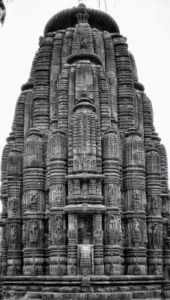 state religion in China.
state religion in China.
“Today, when India and China are at loggerheads, it is important to remember that India once culturally colonised China. When it became the state religion under the emperor Wu Zeitian in the 660’s, with it came a bunch of Indian learning — Indian Geography, ideas of astronomy, astrology and mathematics. For a brief period there was a very wholesale Indian culture colonization of China. It was never actually complete since Chinese culture is very strong and very ancient, but all sorts of Indian ideas were grafted onto Chinese culture and that was the first part of the book.
The second part of the book is south and eastwards, the story of Buddhism and Hinduism heading through the maritime silk route. Particularly the Pallava’s from Bay of Bengal to Java, Indonesia via Vietnam. The third part of the story is on Indian mathematics and astronomy heading west-wards.”
Talk to him about his fascination with photography, and the author says that it goes well with his work, and allows him to see the history that he has read and written about. It a very satisfactory thing to have a record of travelling. The first thing I do when I arrive at an amazing temple or site, is to photograph it. In a sense it helps you focus. Obviously, the photographs are a wonderful thing in themselves if you get them right.”
The author, who has been mostly using mobile phones to photograph, recalls that when he recently met his friend, Don McCullin, considered Britain’s greatest living photographer, he 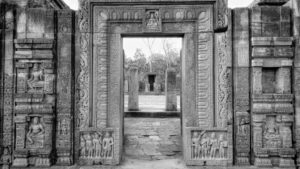 too was bowled over by the results.
too was bowled over by the results.
Just like the current one, even his last exhibition, ‘Historian’s Eye’ boasted of black & white photographs. Ask him why he prefers that over colour, and the author asserts, “Some of the works that I most admire are from Bill Bryant, Cartier-Bresson, Don McCullin and Sebastian Salgago. These are photographers who have always shown how black to white could be a much stronger medium than color in the hands of a real master. I think it reduces and it adds to the strangeness. Also, it reduces familiarity. If you can get it right, it makes for much more powerful and moody images. It emphasizes signal, patterns and form.”
This author of ‘City of Djinns’ — a love letter to Delhi, who made an entire generation rediscover the country with works like ‘In the Age of Kali’ ‘Nine Lives’ is not really missing writing in that genre. “I still do long magazine pieces. However, history is my real love in which I try to channel all my love for archaeology and art history. It is much more difficult to write about early cities. After all, we are trying to rebuild entire civilizations from a few 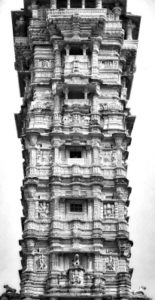 scripts, archaeological digs and records of a few Chinese pilgrims.
scripts, archaeological digs and records of a few Chinese pilgrims.
For someone who has written extensively on Afghanistan, it is hard not to ask him about his take on the situation there now. “A tragedy and completely avoidable situation. There was a folly on the part of the US to withdraw like that. Such a major setback for everyone. Obviously, first and foremost for the Afghans, but also a major setback for America, Britain, Australia and India. India has lost a lot of influence in that region. The only people who really win from this I think are the Chinese. Obviously, the Pakistanis have been triumphant. I think the real winners are China and Pakistan. There were actually very few American troops in Afghanistan and it was not costing huge amounts of money, by American standards. There was no anti war movement like with Vietnam. It could easily have been maintained.” (IANS)



